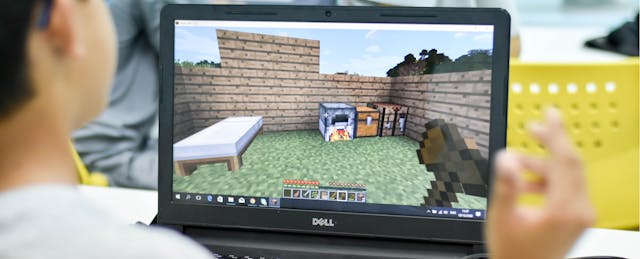As The Verve and Billy Ray Cyrus can probably tell you, a second hit is far from guaranteed. The makers of the original MinecraftEdu know a thing about it too.
Those developers, whose company TeacherGaming pivoted sharply after Microsoft took over MinecraftEdu two years ago, are facing tough times—and laying off staff—as they try to craft a niche in a crowded educational gaming landscape that has struggled to attract broad interest from schools. In the past few days, the Finland-based company has decided to shrink its staff to about eight, down from 13 (and a peak of 18 employees a few years ago).
“Revenues are modest,” Santeri Koivisto, the company’s CEO and co-founder, tells EdSurge. “We are currently scaling down operations to the point where our runway would take us through the next school buying cycle. It’s not running out of cash. It’s the need to adapt to the revenues we are currently making so we can keep our mission alive.”
The company’s traction has simmered considerably from a few years ago, when as many as 15,000 classrooms were licensing its version of Minecraft, modified specifically for use in schools. Created in 2011 by Koivisto, Aleksi Postari, the current chief technology officer, and New York teacher Joel Levin, MinecraftEdu was a rare hit, in terms of a commercial game that found success in the classroom. And it came at a time when schools needed to run their own servers to play, which was time- and resource-intensive.
After Microsoft acquired Minecraft for $2.5 billion in 2014, it bought out TeacherGaming’s rights and created its own version two years later. That marked a momentous turning point for the company.
Levin left around the time of the Microsoft sale, and the company began working with other titles, including the physics simulator Kerbal Space Program and Cities: Skylines, a SimCity competitor. While the education gaming industry has spawned innumerable standalone apps and even dedicated companies, like Filament Games, TeacherGaming focuses on adapting mainstream entertainment games for education (although it also offers several Filament titles on its platform).
In January 2018, the company raised $1.6 million from Makers Fund, a gaming-focused venture capital firm. The goal was to help the company expand its business—and it has. Today TeacherGaming has upped the number of titles it offers schools to around 50 in a quest to become the “Steam for education,” in reference to the popular gaming platform that offers a marketplace for games.
While titles like Kerbal, Skylines and the astrophysics simulator Universe Sandbox 2 have proven popular, they haven’t quite broken out the way Minecraft did. No game on the platform currently accounts for more than 15 to 20 percent of overall play time.
Also at issue: Too few schools are using the service. While TeacherGaming typically does not pay game developers upfront, opting instead for a revenue sharing model, there are other costs involved. The company creates a curriculum and lesson plans around each game and offers learning analytics, showing how games are being used. It’s all packaged together so schools can install games with one click—a major improvement over the Minecraft days.
“We try to make it as low-threshold as we can” for schools, says Mikael Uusi-Mäkelä, the company’s chief operating officer, who adds that games are tagged and labeled for compatibility with Common Core and Next Generation Science Standards. “You wouldn’t need to know the games. You just pick the topics you would like to address.”
To date, the company says about 1,300 schools have purchased one-time licenses to individual games—sometimes buying several licenses of the same title to use on multiple machines—at discounts around 30 percent of retail price.
Another 100 schools have purchased blanket subscriptions, which cost schools $1,200 per year, for access to all 50 games on the platform. In September, the company added 20 subscribers, a major uptick after a slow summer. But Koivisto says the company needs about 60 new subscribers per month before it can think about a sustainable future or possible growth. To get there, the company is considering using schools to help sell games and subscriptions directly to parents, as it figures out how to expand its audience beyond enthusiastic teacher-gamers.
“Games still end up being the supplementary or complementary curriculum,” explains Uusi-Mäkelä. “You can show that this game is part of the core curriculum, you can show the curriculum points you address, but we still feel like games are the extra materials.”
As for raising new funds, right now Koivisto says the numbers don’t quite match with investors’ expectations, despite the “massive” market the company could tap into. (It may eventually look to raise a Series A round.) And that’s largely OK with Koivisto, who is hoping for enough growth to return the company to pre-layoff levels. Longer term, he says he’d be fine with a company of 50-100 people that has the capacity to work with more titles.
“We don't have any huge, ambitious ‘We need to be a unicorn’ need,” Koivisto says. “But at the same time I think that to keep the excitement, the company needs to grow.”


